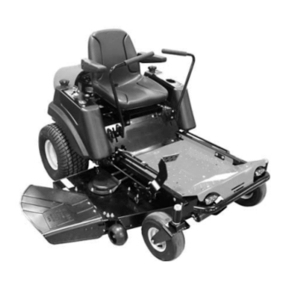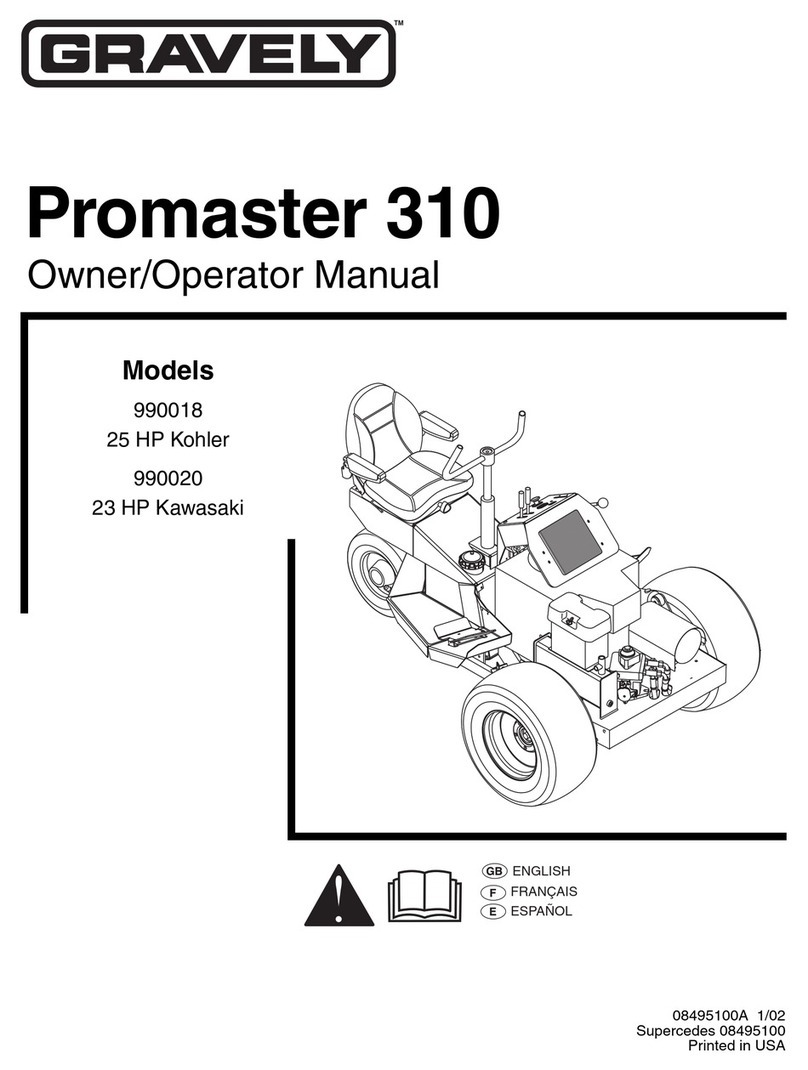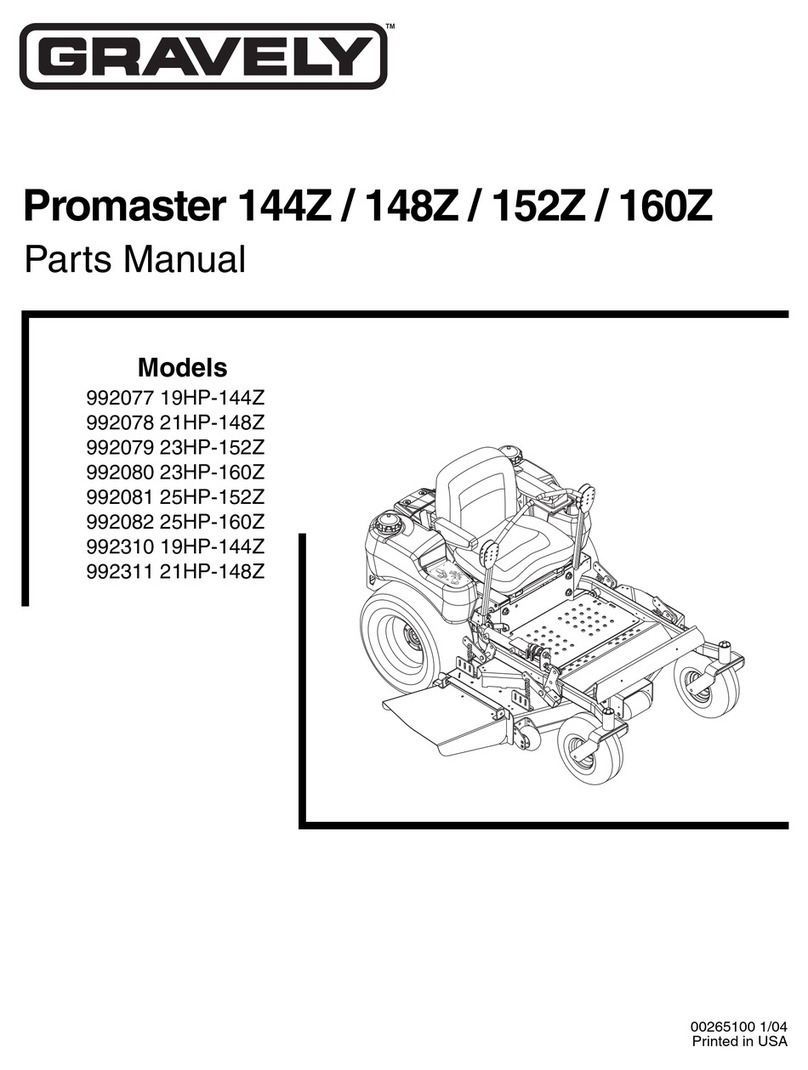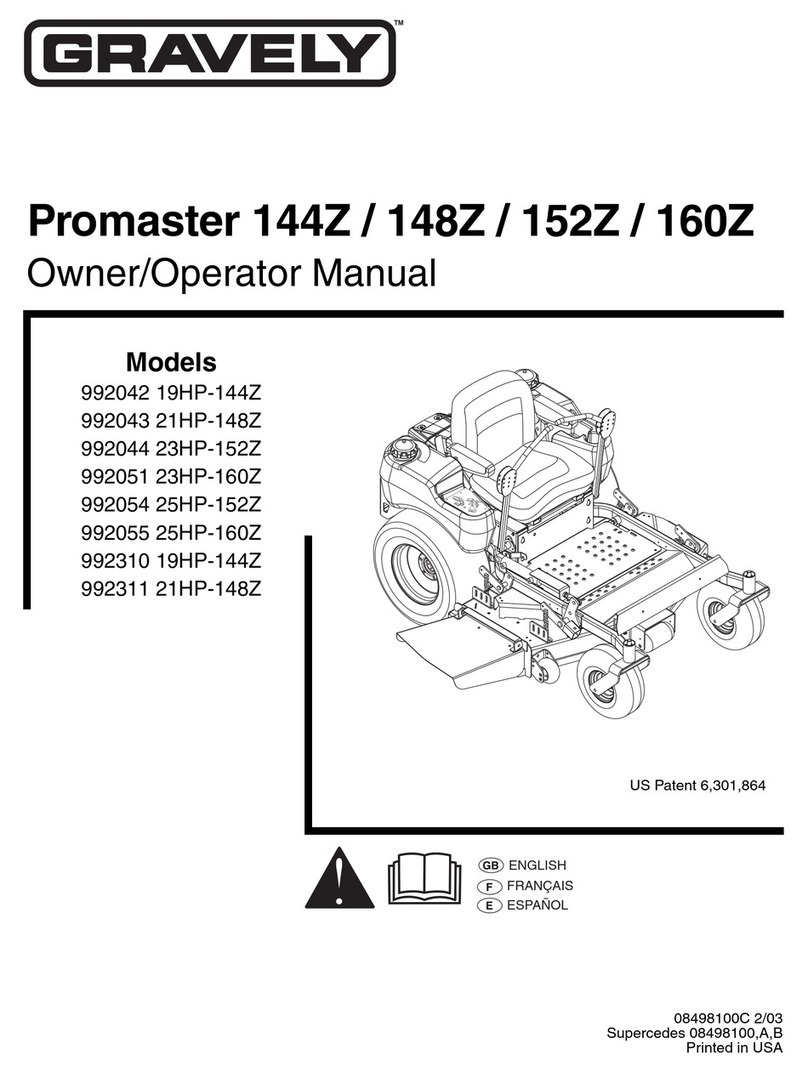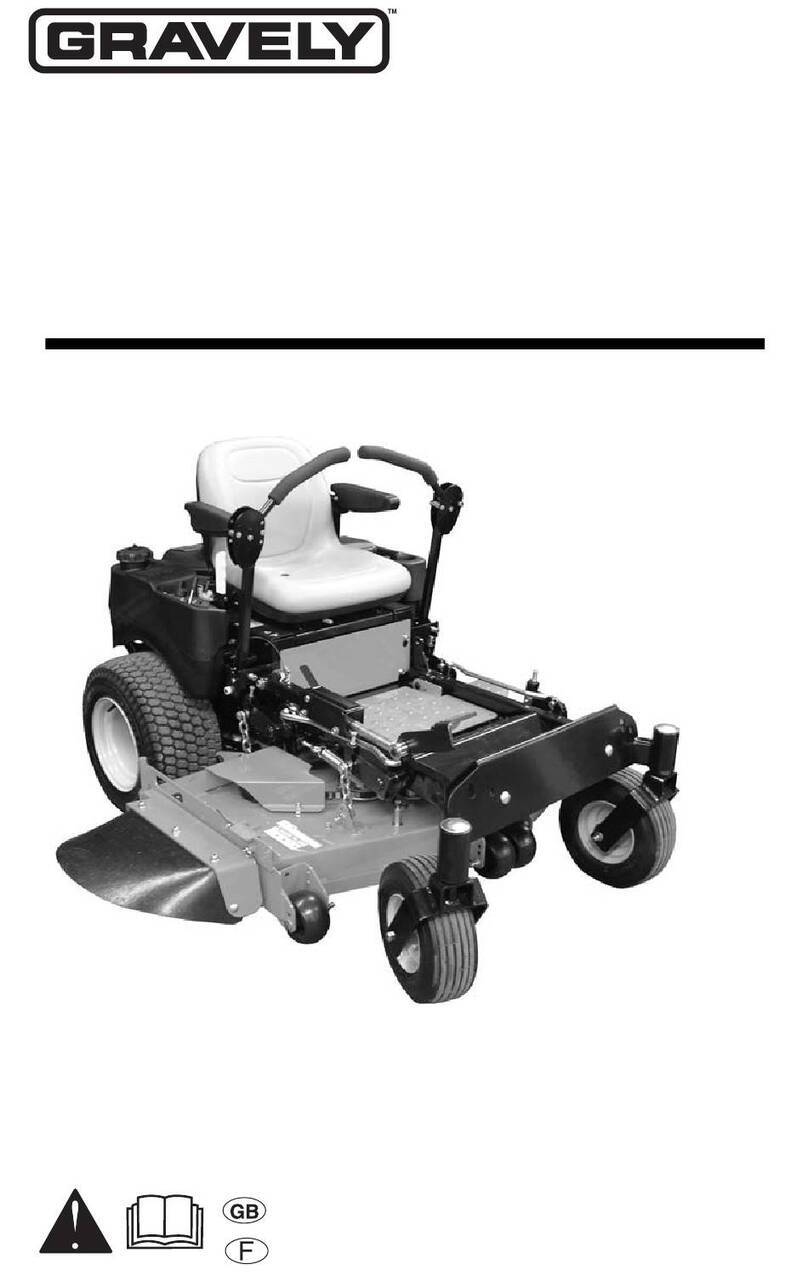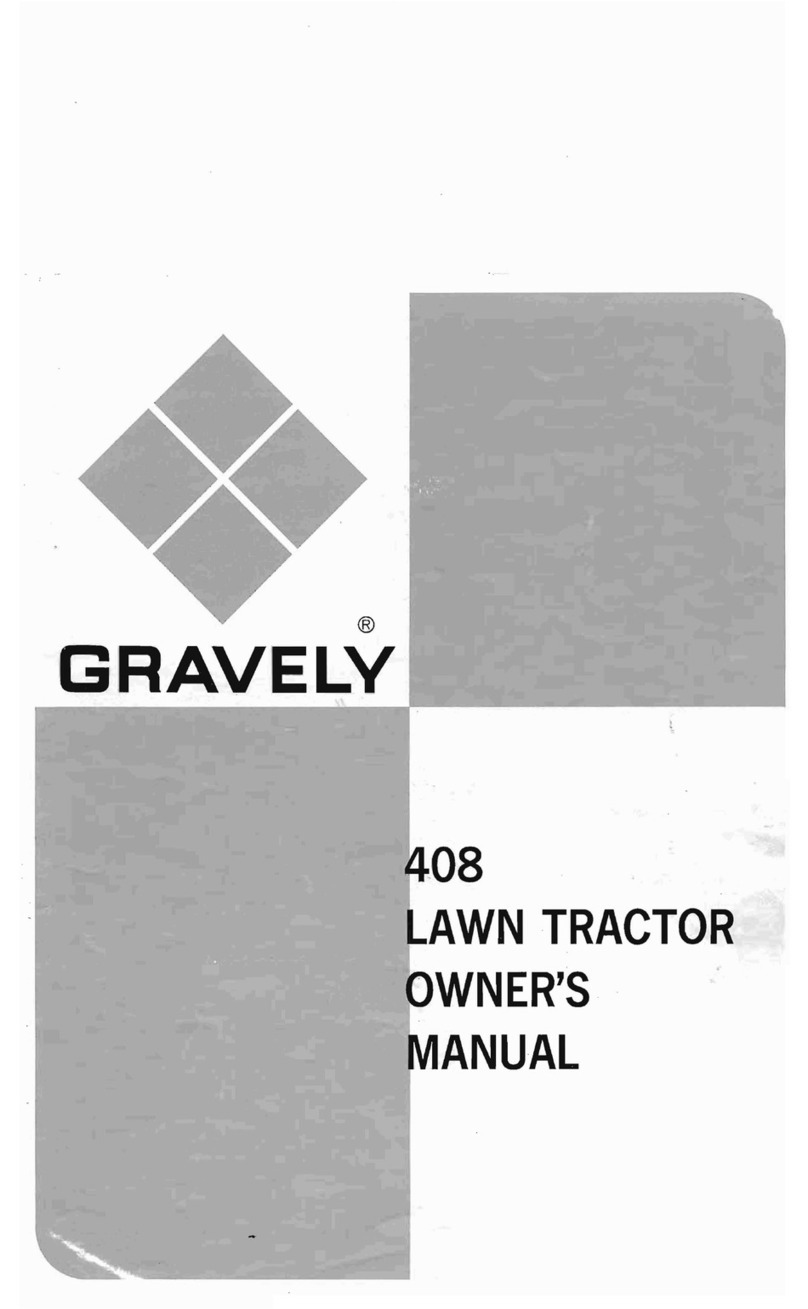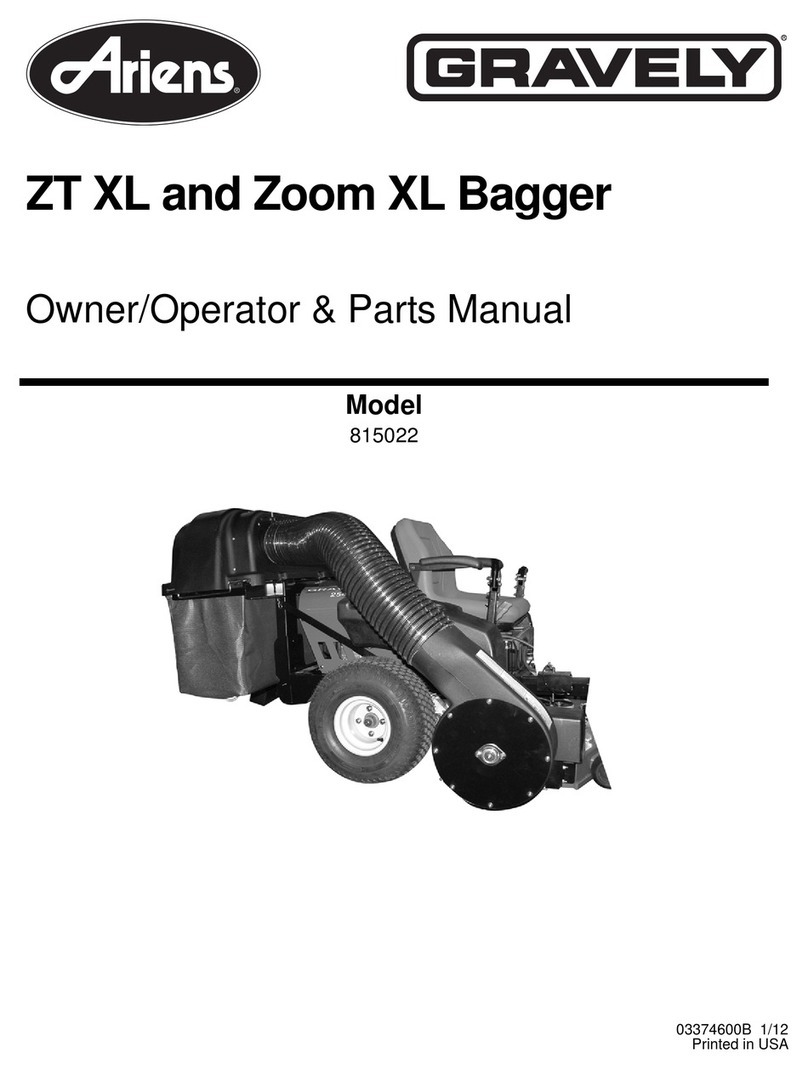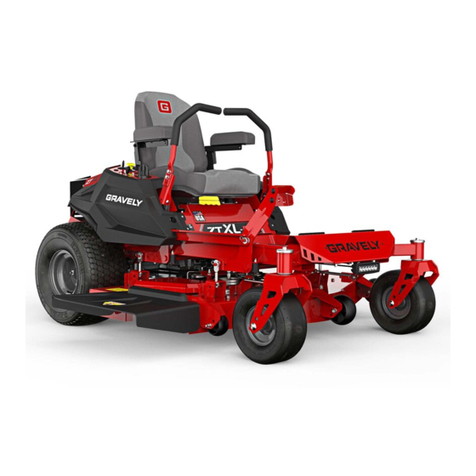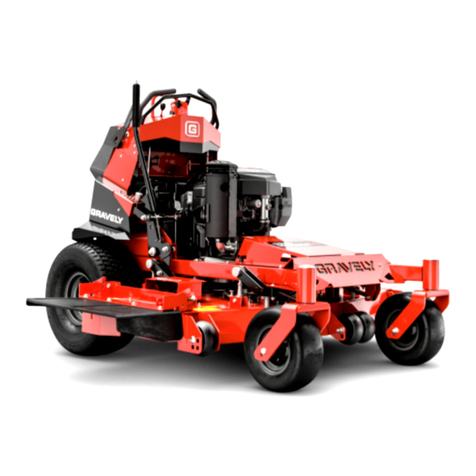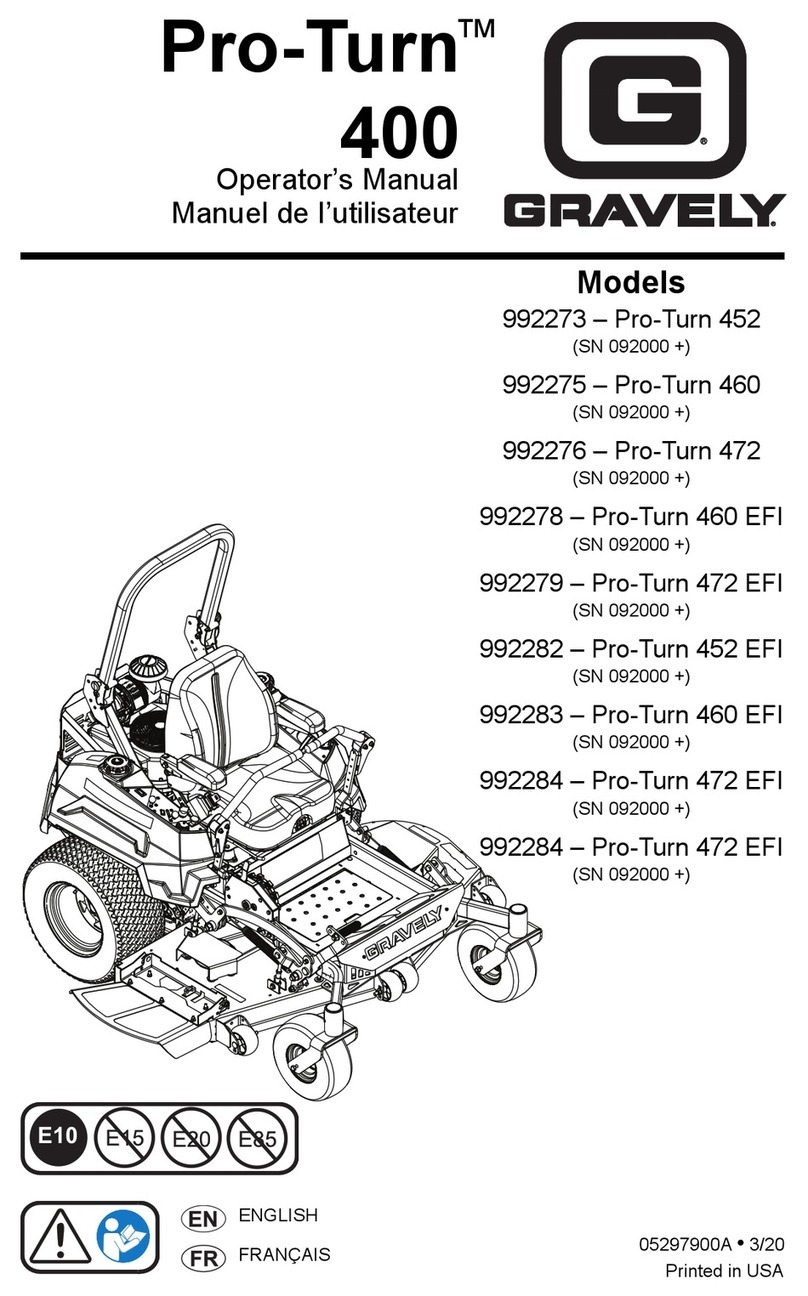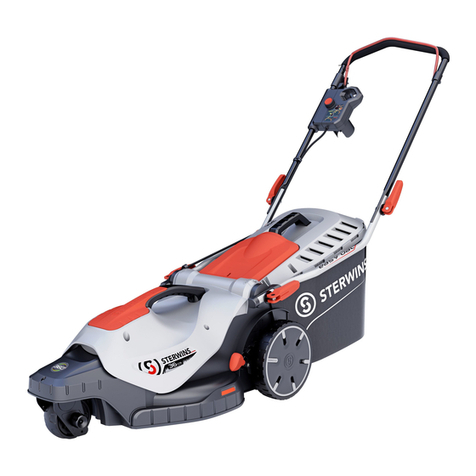
EN - 8
Operation on slopes may lead to loss of
steering control. When operating on slopes
be prepared to react to an emergency
situation:
• Return drive control grip to neutral
position.
• Immediately engage parking brake.
• Turn off PTO and engine.
DO NOT park on slopes unless necessary.
When parking on slope ALWAYS chock or
block wheels. ALWAYS engage parking
brake.
Choose a slow ground speed so you will not
have to stop or shift while on a slope.
Slow down and use extra care on hillsides.
Be sure to travel in the recommended
direction on hillsides. Turf conditions can
affect the machine’s stability. Use caution
while operating near drop-offs.
DO NOT operate near drop-offs, ditches, or
embankments. Unit can suddenly turn over if
a wheel is over the edge of a cliff or ditch, or
if an edge caves in.
DO NOT bypass transmission or allow
transmission to free-wheel when on a slope.
Fuel
To avoid personal injury or property damage,
use extreme care in handling gasoline.
Gasoline is extremely flammable and the
vapors are explosive.
Ethanol blends must not exceed E10. Higher
ethanol content may cause your
machine to run hotter and damage your
engine.
Secure fuel cap and clean up spilled fuel
before starting engine.
Extinguish all cigarettes, cigars, pipes, and
other sources of ignition.
Use only an approved fuel container.
NEVER store the machine or fuel container
where there is an open flame, spark, or pilot
light such as on a water or space heater or
other appliances.
NEVER fill containers inside a vehicle or on
a truck or trailer bed with a plastic liner.
ALWAYS place containers on the ground
away from your vehicle before filling.
NEVER refuel the machine indoors.
NEVER remove fuel cap or add fuel with the
engine running. Allow engine to cool before
refueling.
Fuel is highly flammable and its vapors are
explosive. Handle with care. Use only an
approved gasoline container with an
appropriately sized dispensing spout.
NO smoking, NO sparks, NO flames.
Remove equipment from the truck or trailer
and refuel it on the ground. If this is not
possible, then refuel such equipment with a
portable container, rather than from a
gasoline dispenser nozzle.
Keep the nozzle in contact with the rim of
the fuel tank or container opening at all
times until the fueling is complete. DO NOT
use a nozzle lock-open device.
NEVER overfill fuel tank. Reinstall fuel cap
and tighten securely.
If fuel is spilled on clothing, change clothing
immediately.
DO NOT OVERFILL! This equipment and/or
its engine may include evaporative
emissions control system components,
required to meet EPA and/or CARB
regulations, that will only function properly
when the fuel tank has been filled to the
recommended level. Overfilling may cause
permanent damage to evaporative
emissions control system components.
Filling to the recommended level ensures a
vapor gap required to allow for fuel
expansion. Pay close attention while filling
the fuel tank to ensure that the
recommended fuel level inside the tank is
not exceeded. Use a portable gasoline
container with an appropriately sized
dispensing spout when filling the tank. DO
NOT use a funnel or other device that
obstructs the view of the tank filling process.
Towing
DO NOT attach towed equipment or
accessories, other than a sulky.This vehicle
is not designed to tow anything other than
sulkies.
Accessories
Attachments reduce the maximum operating
slope angle. DO NOT operate on slopes
over 10° when operating with attachments.
Check grass catcher components and the
discharge guard frequently and replace with
the manufacturer’s recommended parts,
when necessary.
Use only attachments recommended by
AriensCo that are appropriate to your use
and can be used safely in your application.



